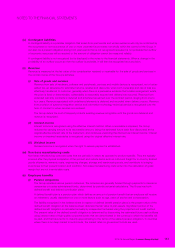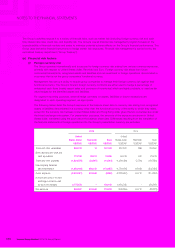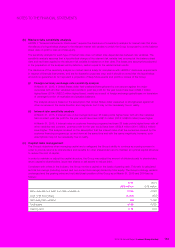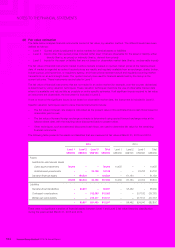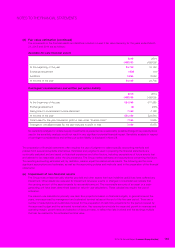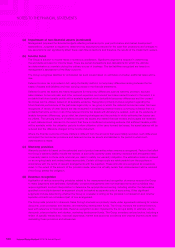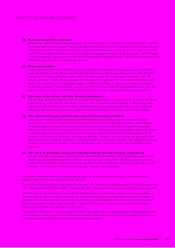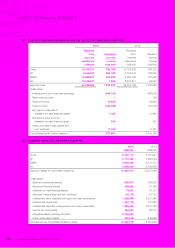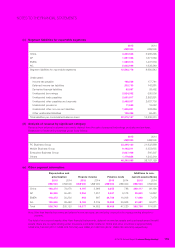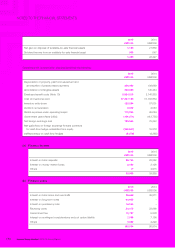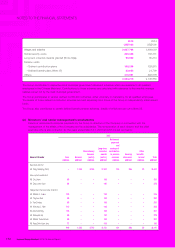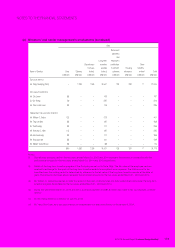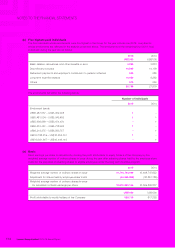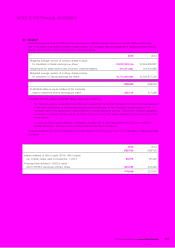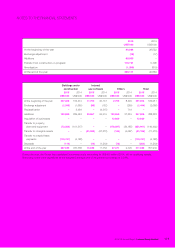Lenovo 2015 Annual Report Download - page 169
Download and view the complete annual report
Please find page 169 of the 2015 Lenovo annual report below. You can navigate through the pages in the report by either clicking on the pages listed below, or by using the keyword search tool below to find specific information within the annual report.
167
2014/15 Annual Report Lenovo Group Limited
NOTES TO THE FINANCIAL STATEMENTS
4 CRITICAL ACCOUNTING ESTIMATES AND JUDGMENTS (continued)
(d) Revenue recognition (continued)
Revenue from sales of goods is recognized when both ownership and risk of loss are effectively transferred to customer.
Risk of loss associated with goods-in-transit is generally retained by the Group. The Group books revenue upon delivery
of products, and defers the amounts of revenue based on the estimated days-in-transit at the end of each month. The
days-in-transit is estimated based on the Group’s weighted average estimated time of shipment arrival. Cost of in-transit
products is deferred in deposits, prepayment and other receivables in the balance sheet until revenue is recognized. The
estimates of days-in-transit are reviewed semi-annually.
(e) Retirement benefits
Pension and other post-retirement benefit costs and obligations are dependent on various assumptions. The Group’s
major assumptions primarily relate to discount rate, expected return on assets, and salary growth. In determining the
discount rate, the Group references market yields at the balance sheet date on high quality corporate bonds. The
currency and term of the bonds are consistent with the currency and estimated term of the benefit obligations being
valued. The expected return on plan assets is based on market expectations for returns over the life of the related
assets and obligations. The salary growth assumptions reflect the Group’s long-term actual experience and future and
near-term outlook. Actual results that differ from the assumptions are generally recognized in the year they occur.
(f) Fair value of derivatives and other financial instruments
The fair value of financial instruments that are not traded in an active market (for example, over-the-counter derivatives)
is determined by using valuation techniques. The Group uses its judgment to select a variety of methods and make
assumptions that are mainly based on market conditions existing at each balance sheet date. The Group has used
discounted cash flow analyses for various available-for-sale financial assets that are not traded in active markets.
(g) Fair value of contingent considerations and written put option liabilities
Certain of the Group’s business combination activities involved post-acquisition performance-based contingent
considerations. The Group recognizes contingent considerations and the corresponding written put option liabilities
at their fair values which are determined in accordance with the terms under those relevant agreements and with
reference to the estimated post-acquisition performance of the acquired subsidiaries/businesses. Judgment is required
to determine key assumptions (such as growth rate, margins and discount rate) adopted in the estimation of post-
acquisition performance of the acquired subsidiaries/businesses. Changes to key assumptions can significantly affect
the amounts of future liabilities. Contingent considerations shall be re-measured at their fair value resulting from events
or factors emerge after the acquisition date, with any resulting gain or loss recognized in the consolidated income
statement.
(h) Fair value of identifiable assets and liabilities acquired through business combinations
The Group applies the acquisition method to account for business combinations, which requires the Group to record
assets acquired and liabilities assumed at their fair values on the date of acquisition. Significant judgment is used to
estimate the fair values of the assets and liabilities acquired, including estimating future cash flows from the acquired
business, determining appropriate discount rates, asset lives and other assumptions.
5 SEGMENT INFORMATION
Management has determined the operating segments based on the reports reviewed by the LEC, the chief operating
decision-maker, that are used to make strategic decisions.
The LEC considers business from a geographical perspective. The Group has four geographical segments, China, Asia Pacific
(“AP”), Europe-Middle East-Africa (“EMEA”) and Americas (“AG”), which are also the Group’s reportable operating segments.
The LEC assesses the performance of the operating segments based on a measure of adjusted pre-tax income/(loss).
This measurement basis excludes the effects of non-recurring expenditure such as restructuring costs from the operating
segments. The measurement basis also excludes the effects of unrealized gains/(losses) on financial instruments. Certain
interest income and expenditure are not allocated to segments, as this type of activity is driven by the central treasury
function, which manages the cash position of the Group.
Supplementary information on segment assets and liabilities presented below is primarily based on the geographical location
of the entities or operations which carry the assets and liabilities, except for entities performing centralized functions for the
Group the assets and liabilities of which are not allocated to any segment.


